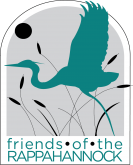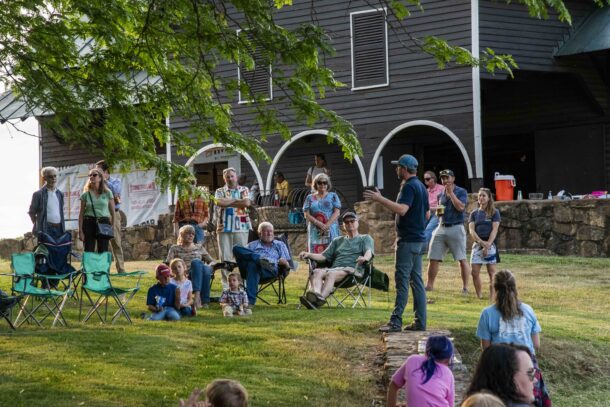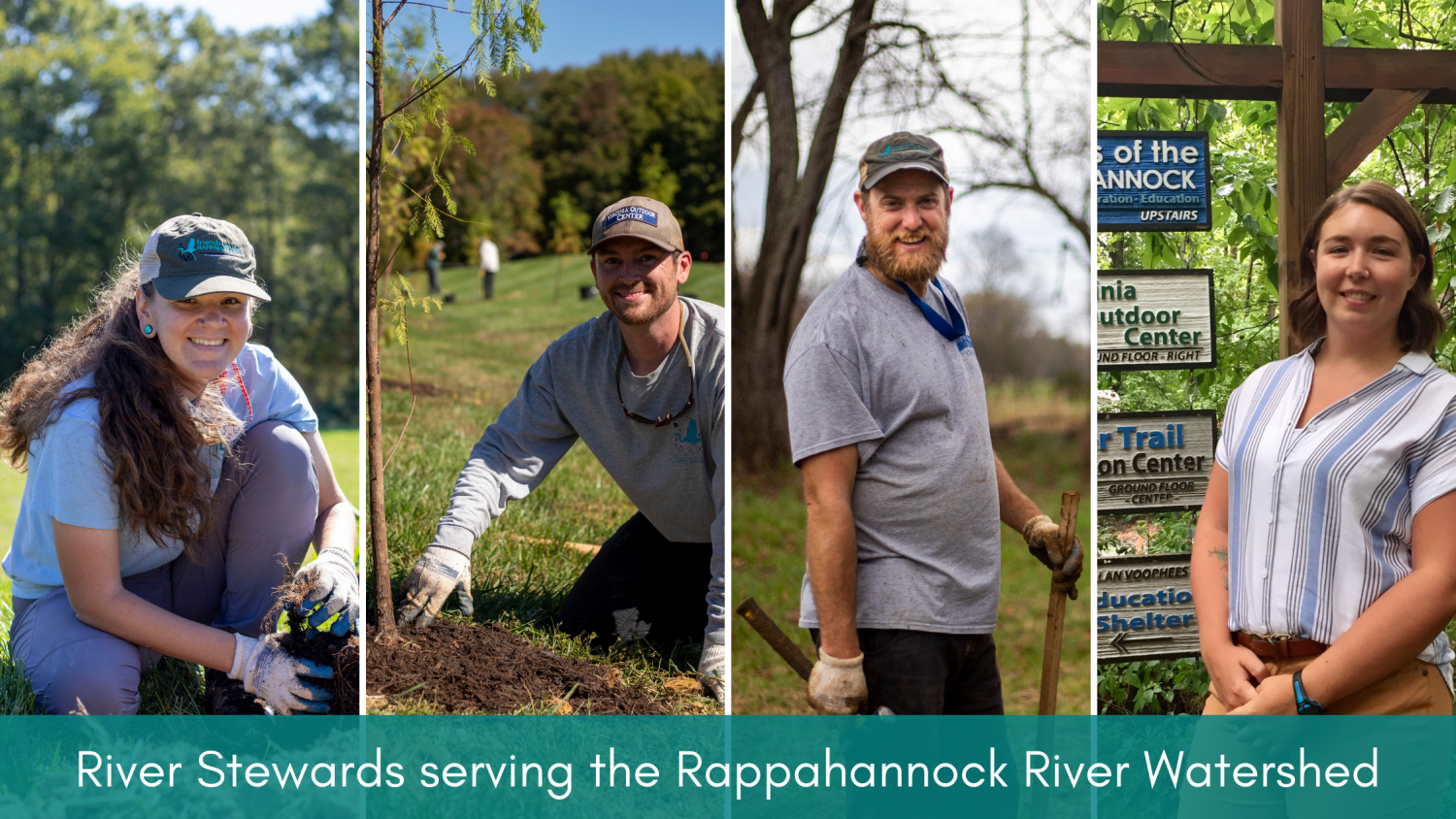
This year was a year to remember, but for Friends of the Rappahannock (FOR) it will be remembered as a year for growth and expansion. In 2020, we instituted the River Steward program allowing us to increase our ability to advocate, restore and educate across all 2,100 square miles of the beautiful Rappahannock River watershed. In each region, FOR was able to pinpoint the river’s and communities’ unique needs.
The Headwaters
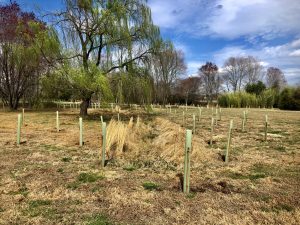
Tree Planting at Cedar Mountain Farm
Starting in the headwaters, FOR accomplished a long time goal of establishing an office in Culpeper with a dedicated River Steward. With our Upper Rappahannock River Steward October Greenfield, we have been able to offer and expand programs that protect and restore the health of the Rappahannock River. This comes with the investment of thousands of dollars in the region for restoration and education programs.
October has devoted time to advocating for public access sites along the Rappahannock and its tributaries, offering 0% loans to agricultural producers for conservation projects, teaming up with localities to give away free trees, and leading outreach and education programs across the region. “These communities want to do their part in keeping the Rappahannock healthy.” October shared, “It’s been amazing to see how the headwater communities have responded to our initiatives.” Along with tree planting and tree giveaways, FOR was able to create and distribute science education programs for kids and families by partnering with county parks.
Babbling near the Upper Rappahannock, the Rapidan River restoration work has expanded. This year, FOR and partners kick started a trout restoration project, planted thousands of trees to create riparian buffers in the Rapidan and Robinson River watersheds, and has more projects planned for next spring. These buffers are just one step towards making the Rappahannock clean and healthy. Similar to the Upper Rappahannock, FOR continues to work with partners to educate the community and its leaders on the importance of public access. FOR will continue to advocate for more public access sites along the tributaries and the Rapidan itself.
The Middle Rappahannock
Flowing down to the Middle Rappahannock, River Steward Adam Lynch has been partnering with the community to facilitate river cleanups, partner on tree giveaways, and lead interpretive paddle trips on the Rappahannock. Families and friends had the opportunity to borrow equipment from FOR to hold their own river clean ups to ensure safety for all involved. Not only did these efforts help our river’s health, it allowed community members to receive some much needed outdoor time.
Adam has also played an integral role in advocating for environmentally sustainable planning projects. The greater Fredericksburg region is one of the fastest growing areas in the country and this means a lot of development and expansion. FOR is excited to work with our local partners to give the Rappahannock River and our natural resources strong representation throughout these planning efforts to ensure the long term sustainability of our communities and the River we love.
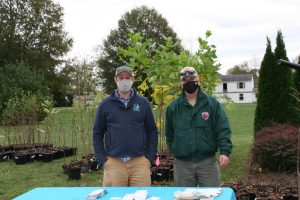
Brent Hunsinger and VA Department of Forestry give away trees in Port Royal
River Steward Brent Hunsinger worked with multiple schools, Virginia Department of Forestry, and incredible volunteers to undertake a series of large tree planting projects in King George and Caroline counties. He also teamed up with local partners to give away 750 trees in these counties! These planting projects were an opportunity to teach students and community members the importance of trees and the impact they have on filtering runoff before it flows into the river. Special thanks to our partners at the Hanover-Caroline Soil and Water Conservation District for supporting a project that won the participant of the year award from their Virginia Conservation Assistance Program (VCAP).
The Lower Rappahannock
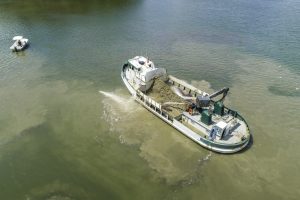
FOR partners spray recycled oyster shell into Carters Creek
Rippling downstream, Lower River Steward Anne Self has been busy at our Tappahannock office. Anne has worked with local partners to support virtual education programs for local schools, lead socially distanced interpretive paddle trips, and has overseen the reforestation of 17 acres at Fones Cliffs with the U.S. Fish and Wildlife Service and VA Department of Forestry! Out on some of our favorite tidal creeks, FOR has worked with partners to install thousands of bushels of oyster shells onto reef restoration sites in Carters Creek and Urbanna Creek. FOR invested over $30,000 in local seafood companies to support their businesses during this difficult year.
Watershed and State-Wide
Our river stewards are an essential tool to their local service areas, but also work to support watershed-wide initiatives. This year our river stewards worked with FOR Deputy Director to support the Rappahannock River Roundtable partnership which provides resources and technical assistance to numerous partners across the Rappahannock River basin: GIS support services, grant writing, meeting facilitation, volunteers, resource sharing, and more. This collaborative effort works to accelerate the pace of land and water conservation throughout the Rappahannock River watershed.
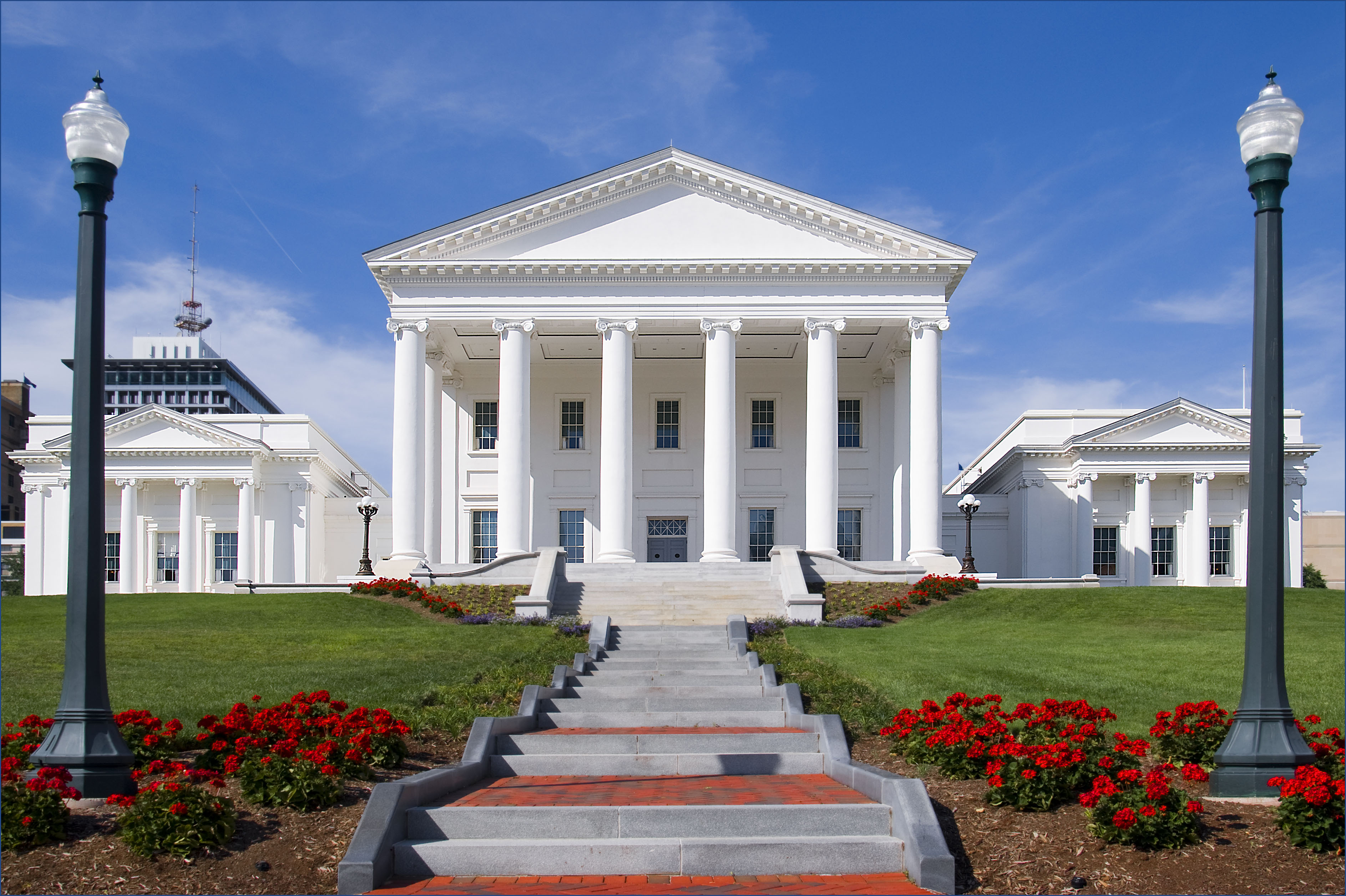 At the state level, great strides were made in 2020 to further protect the Rappahannock River. As our State Policy Coordinator, Brent Hunsinger worked with state legislators to enact regulations banning fracking in the eastern Virginia Groundwater Management Area (Rappahannock River east of I-95). River Stewards Brent, Anne and Adam worked with campaign partners to advocate for the lower half of the Rappahannock River to gain scenic river status. This would extend the scenic river designation beyond Fredericksburg through many sections of the lower Rappahannock. Brent shares, “We believe the designation of the lower Rappahannock as a Scenic River will boost and amplify the agricultural, seafood, and ecotourism industries in the region. Scenic resources frame authentic experiences for tourists, support ecotourism, increase land values, and attract new businesses.”
At the state level, great strides were made in 2020 to further protect the Rappahannock River. As our State Policy Coordinator, Brent Hunsinger worked with state legislators to enact regulations banning fracking in the eastern Virginia Groundwater Management Area (Rappahannock River east of I-95). River Stewards Brent, Anne and Adam worked with campaign partners to advocate for the lower half of the Rappahannock River to gain scenic river status. This would extend the scenic river designation beyond Fredericksburg through many sections of the lower Rappahannock. Brent shares, “We believe the designation of the lower Rappahannock as a Scenic River will boost and amplify the agricultural, seafood, and ecotourism industries in the region. Scenic resources frame authentic experiences for tourists, support ecotourism, increase land values, and attract new businesses.”
While each region of the Rappahannock is unique in its beauty, this year FOR has enjoyed the opportunity to serve each region individually; from the headwaters in Chester Gap through all 195 miles down to Windmill Point.
-Carleigh Starkston, Development Coordinator
